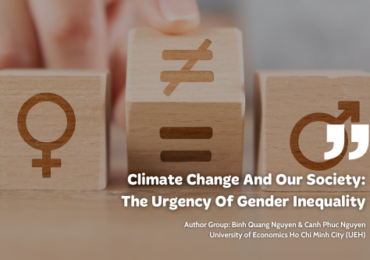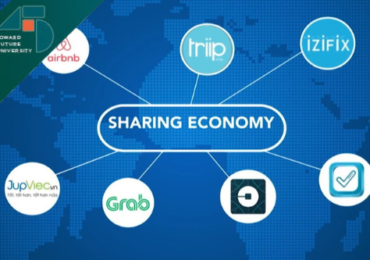Overview Of Digital Currency – Part 5: DIEM Private Stabilized Currency
11 November, 2021
Facebook has implemented its own cryptocurrency (Libra coin, now renamed as Diem) with ambitious goal towards Libra/Diem as “creating a simple global monetary and financial infrastructure, empowering billions of people”. Therefore, is this digital currency of the social networking Facebook Empire beyond governmental control? What policies will countries change to combat gold, dollarization, and even Diemization?

Blockchain technology creates new options for decentralized international payments, linked to a specific fiat currency or a basket of fiat currencies that are calculated according to a certain algorithm. This software is to be applied into the global banking system which is relatively outdated; potentially, a much more payable trading means. In 2020, the largest producers in the world (BHP, Vale and Rio Tinto), have all completed their sale of iron ore on blockchains to Chinese companies. Singaporean banks are also involved in these transactions. Singapore has also been testing blockchain transactions with Sberbank from Russia. This technology can lead to all kinds of new payment channels.

Diem currency, by Facebook, was renamed as Libra currency in 2020
Diem digitalized currency
The participation of governments, reputable organizations in this chain is able to create multi-currency stable coins in the region; in other words, regional Bancor creation for international trade purposes. In fact, it is be possible to use the same technology on a larger scale.
Right in America, in June 2019, Facebook revealed its plans to launch its own cryptocurrency (Libra coin, now renamed as Diem) in 2020, in combination with a global digital payment system and digital identity system, through Facebook/WhatsApp/Instagram Pay. That Libra/Diem is aiming at its ambitious goal of “creating a simple global monetary and financial infrastructure that empowers billions of people” immediately caught the attention of policymakers, central banks and regulatory agencies around the world. This announcement is groundbreaking, not because of Libra/Diem’s promise scope (which will revolutionize the payment system); rather, Facebook ability in living up to these claims due to their global-reaching capacity and collected-resources of the organizations supporting the project. Facebook and other members of the market established Libra association (currently, Diem association). Initial capital contribution for each member is 10 million USD with 100 members. Membership expansion or contraction depends upon Diem Association to maintain Libra/Diem value in stability.
The number of newly-issued Diems is supported by as many as low-volatility financial assets (Treasuries of some major countries listing as: US, EU, UK, Japan and so on) are stored in reputable banks and organizations to guarantee Diem value. This is comparatively similar to that of the previous Gold standard; nevertheless, its operation nature is dependent upon the need to hold a portfolio of Treasuries to stabilize Diem value. Concurrently, this monetary system works in transaction-decentralization approach, not money creation. Therefore, the role of nominal money creation remains with Central bank. In addition to the benefits from the system and transaction function, digital currency helps to change the way of holding fiat money, which is used for global commercial payments.
With this monetary system, individuals and businesses holding Diem as portfolios are backed up by governmental debts without traditional constraints. Laws and regulations in each country usually protect fiat currencies; therefore, being capable of limiting or prohibiting an individual or a business from using money to invest in Treasuries of other countries. Diem operation model will alter the way this asset has been held. Concurrently, holding these assets is used as one payment means besides value-storage function as an investment.
Recently, in the financial market, the number of new buyers as individual and corporate investors has arisen besides mentioned-above traditional members. The current issue is whether each government will forbid their citizens from using currency of another country; however, is it possible to prevent citizens from holding Diem when the system is decentralized? Each country will have to change its policy to handle goldization, dollarization and; curently, Diemization.
Potentiality and challenges
The future development potential of Diem cryptocurrency is enormous due to five reasons as follows:
1st: The fact that community members within Diem association, as leading organizations in many fields, can apply Cryptocurrency directly in their fields would provide a solid first step towards attracting more organizations to Diem Blockchain network. These organizations also ‘lobby’ for relationships that help connect Diem with major global central banks.
2nd: Diem uses blockchain mechanism to ensure safety, transaction security and cost savings for users.
3rd: Diem has its own programming language attached to open-source Diem Blockchain so as to assist programmers and developers in easily creating applications based on smart contracts.
4th: The fact that Diem is guaranteed by stable assets with low volatility, helping to reduce exchange rate risk differentiates Diem from traditional Cryptocurrencies.
5th: It is the large community of Facebook users as the foundation in creating a large user network in the first place for Diem.
It goes without saying that Diem will be able to transform the world into a better place by transaction decentralization, technology platforms and additional benefit introduction to users with affordable fees. However, whether Diem goes to the final goal or not is a long story. Nevertheless, all subjects in Vietnamese economy and government need to be prepared a scenario for Diem success or another accepted cryptocurrency that will change the way the world is being operated currently.

Diem stable digitalized currency will be presented in accordance with demands and support from governmental agencies
From the above factors, it can be inferred the challenges that the current payment system is facing and barriers have been created in Diem implementation. As a result, Diem released 2.0 white paper to narrow down the initial ambition; instead, Diem has chosen several regions to issue new stable coins (like: DiemUSD. DiemEUR, DiemGBP and DiemSGD) for aggregation into one basket of digital currencies. Concurrently, Diem 2.0, supported by Swiss financial supervisory authority (FINMA or Financial Market Supervisory Authority), is to be regulated by this FINMA agency as well as other ways of international supervisory cooperation with supervisory units.
Apparently, these steps are to ensure that Diem digital stable coins will be launched upon request and backing from government agencies. This design is a combination of government and private sector. This leads to the possibility of applying Diem framework towards governmental fiat money systems.
Diem’s distinguished strongpoints in terms of practical application into CBDC
General scope
There are 3 approaches to come up with a stable digital currency: (1) Issuance of a government controlled digital currency; (2) Central bank accounts with indirect access; (3) New digital form of currency (Didenko & Buckley, 2018).
Regarding Option (1), in terms of the typical example of Chinese CBDC, full management by a Central bank faces difficulties in implementation and maintenance in the long run. In case of an architecture that centralizes data in one place, system performance failures (like in the event of a cyber-attack or a lack of software updates) will have a direct impact on the economy with no server disruption so as to diversify risks and partially mitigate the impact of system failures.
Little evidence has shown that central banks can effectively handle day-to-day operations of millions of retail customers, even less evidence proving that they have a desire to do so. Central banks tend to lack both infrastructure and expertise factors for that role. The complete elimination of intermediaries will require Central banks to significantly improve their operational capacity, credit scoring, anti-money laundering (AML) check and user information authentication (Know Your Customer – KYC), failed transaction reset and large-scale retail infrastructure construction; listing as: deploying ATMs and payment terminals. Very few Central banks have adequate resources and ultimate willingness to perform these tasks; even, having less desire to cause job loss in commercial banking sector although some have done so for their privileged clients.
Public-private combination
Due to these reasons, Central banks and regulatory agencies will be most likely be partners with commercial banks and technology companies in utilizing their existing infrastructure. In our view, if Diem and other stable coins are to be successful, it will be most likely a public-private partnership with central banks towards account provision and management whereas the private sector provide applications and operating platforms to customers. Therefore, the combination of options (2) and (3) is more likely to be prevailing.
Regardless of the benefits, public-private partnerships can have downsides: Partnerships with private organizations can require more information sharing and affect many affiliated parties.
Which is the trendy orientation: Diem Idea or CBDC?
First, the biggest difference between Diem and CBDC is decentralization. Ledger technology will be working whether it is decentralized or not. Chinese CBDCs being tested are being governmental-controlled and centralized in nature; therefore, they can easily change the information on the blockchain.
In the case of Diem, there is a higher decentralization-degree due to Libra/Diem association consisting of 10 different entities (at least, for the current time) and no or minor partnership. This implies that any change in blockchain data must receive 100% consensus from the association.
From a transparency point of view, it is clear that Diem idea will be supported. A more transparent monetary system will increase users’ confidence, which, in turn, will be the driving force to easily promote changes in monetary policy.
Digitalization based on the number of debenture bonds possessed by governments
As stated above, Diems are issued through government bond reserve and easily convertible from currency to Diems. This feature allows increased flexibility: if a user converts one currency to Diem, the association will use this currency to buy more government bonds and return it to the user in Diem; vice versa, the association will sell government bonds to pay the currency to users.
In this way, government bonds indirectly increase their liquidity, the government will also easily raise capital and reduce issuance costs. All of these are conducted through technology. Similarly, digitizing Vietnam dong also requires Vietnamese government bond reserve. This phase will focus on realization and building solid infrastructure.
Supplementing national governmental bond catalogue in digital currency internationalization
If CBDC digital currency cannot circulate internationally, there will be many obstacles in the future. Therefore, this currency internationalization will require more parties to participate in the blockchain network of CBDC digital currency with enhanced transparency. In addition, this new basket of currencies will contain government bonds from those countries that have accepted digital currency issued by the country, they can quickly convert between digital currency and currency through changing government bond portfolio. This idea, based only on Bancor system, must be technicalized.
Using the same currency will create many benefits, listing as: no need of trade transactions between currencies, quickly leading to saving costs. This will support CBDC issuer inclusion in the regional payments hub and provide leverage for further scaling.
Full article of “Digital currency and new generation of global currency system” by Author group can be viewed here.
Author group: PhD. Lê Đạt Chí, MA. Trương Trung Tài, MA. Nguyễn Triều Đông, (Faculty of Finance – UEH School of Management).
This article is in Series of expanding research and applied knowledge from UEH. We would like to invite dear readers to welcome Podcast Economy Vol 11 An overview of digital currency – Final Part: Vietnamese CBDC Model.
News, Photos: Author group, Department of Marketing and Communication.























